plantnoob
Aquarium Advice Freak
So I've had this newly planted tank for about 2 months now. The tank is 70 gal with an Eheim 2217 canister filter and there is also a marineland penguin 150 in the 20 gal sump.
So overall is say adequate filtration. It's a moderately planted tank. Pic below:
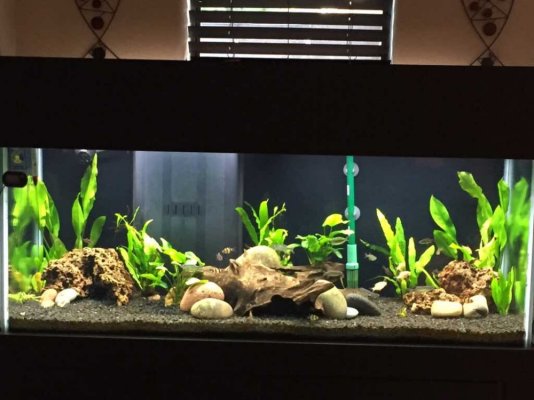
There are several stems of Java Ferns in 3 clusters, 2 Anubias Nana, 2 large and 2 small Amazon swords. I just recently planted some Pygmy swords in the front, that have mostly melted from the immersion. I expect them to grow though once they get adjusted. I follow EI dosing with KNO3, KH2PO4 and Seachem equilibrium, although I've been dosing once a week enough for a 40 gal tank. My basis was the low number of plants. I have 2 T5HO lights with an estimated 37 par at the substrate (Rotala butterfly). Last week I started dosing Seachem excel enough also for a 50 gal tank, every other day.
I've recently noticed the leaves starting to brown in the Java ferns and also some of the leaves in the swords dying/browning. Pictures below:
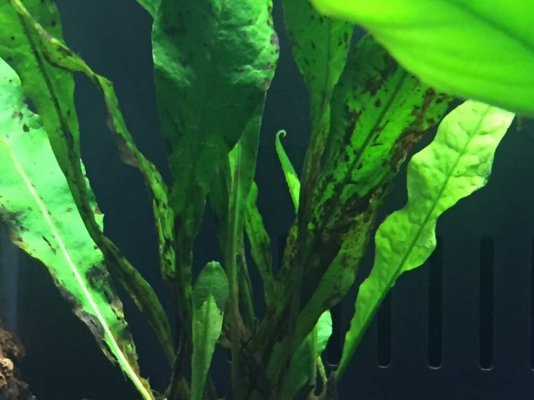
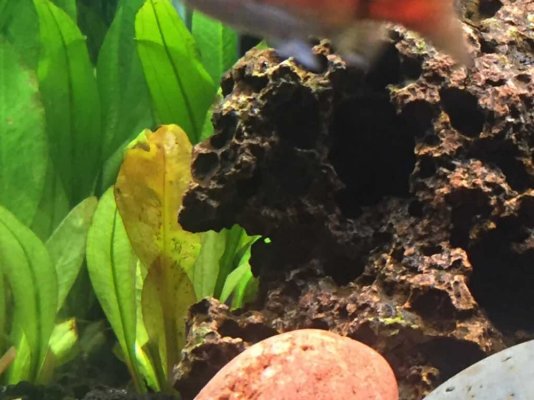
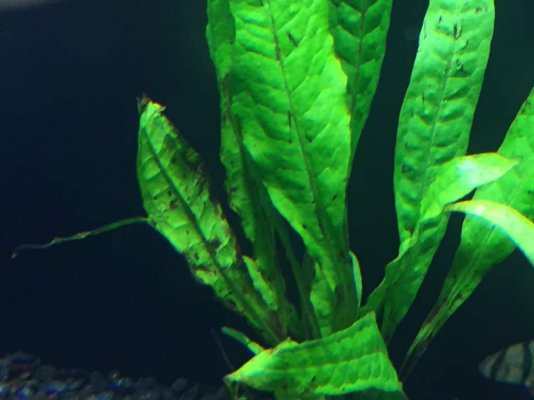
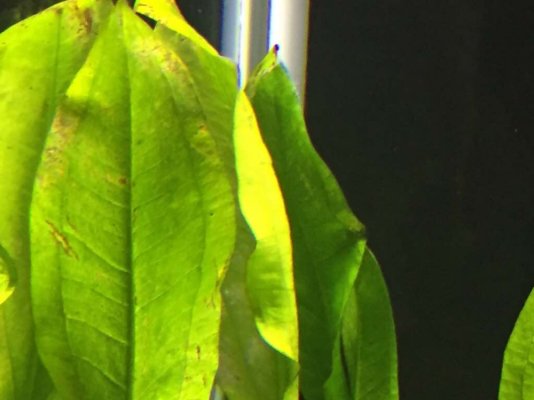
I'm not sure what the reason is. Maybe my imagination but until I started dosing excel, the swords and ferns seemed fine. Could excel cause something like this?
As a side note, I have some algae on the tank walls, maybe green spot plus some diatom problem. My water pH is 7.8.
I'm getting rid of all the swords soon and replacing with Crypt undulata and crypt balansae.
I don't want them to have the same issues too.
Appreciate any advice!
Edit: Substrate is eco complete. I also have a couple of root tabs near the swords.
Sent from my iPhone using Aquarium Advice
So overall is say adequate filtration. It's a moderately planted tank. Pic below:

There are several stems of Java Ferns in 3 clusters, 2 Anubias Nana, 2 large and 2 small Amazon swords. I just recently planted some Pygmy swords in the front, that have mostly melted from the immersion. I expect them to grow though once they get adjusted. I follow EI dosing with KNO3, KH2PO4 and Seachem equilibrium, although I've been dosing once a week enough for a 40 gal tank. My basis was the low number of plants. I have 2 T5HO lights with an estimated 37 par at the substrate (Rotala butterfly). Last week I started dosing Seachem excel enough also for a 50 gal tank, every other day.
I've recently noticed the leaves starting to brown in the Java ferns and also some of the leaves in the swords dying/browning. Pictures below:




I'm not sure what the reason is. Maybe my imagination but until I started dosing excel, the swords and ferns seemed fine. Could excel cause something like this?
As a side note, I have some algae on the tank walls, maybe green spot plus some diatom problem. My water pH is 7.8.
I'm getting rid of all the swords soon and replacing with Crypt undulata and crypt balansae.
I don't want them to have the same issues too.
Appreciate any advice!
Edit: Substrate is eco complete. I also have a couple of root tabs near the swords.
Sent from my iPhone using Aquarium Advice
